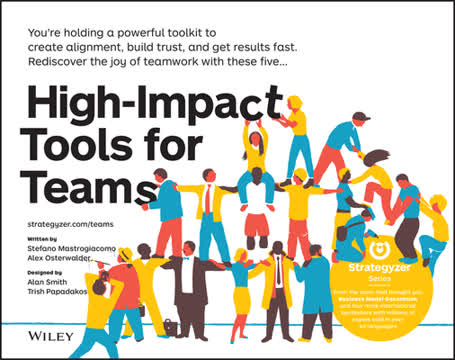Key Takeaways
1. Teams Underperform Due to Misalignment and Unsafe Climates
Teams underperform when members work around each other and not with each other, something that happens when the team climate is unsafe and the team activities are poorly aligned.
Two key factors. Teams often fail to reach their potential due to two primary issues: a lack of alignment in team activities and an unsafe team climate. Misalignment leads to members working at cross-purposes, while an unsafe climate stifles open communication and trust. These issues result in wasted time, duplicated efforts, and ultimately, poor results.
Signs of trouble. An unsafe team climate is characterized by a lack of trust, internal competition, disengagement, fear of speaking up, and a loss of joy in working together. Misaligned team activities manifest as unclear roles, endless unproductive meetings, slow work delivery, constantly shifting priorities, overlapping projects, and team members working in silos.
Addressing the root causes. To improve team performance, it's essential to address both the team's activities and its climate. This involves fostering mutual clarity on goals and roles, as well as nurturing trust-based relationships where members feel safe to contribute and challenge ideas. The book provides tools to help teams achieve this.
2. Team Alignment Requires Communication and Common Ground
Alignment is the process of making individual contributions converge to achieve a shared goal for mutual benefit.
Alignment defined. Team alignment is the process of ensuring that individual efforts contribute to a shared goal, benefiting all team members. It hinges on effective communication to create common ground, enabling team members to anticipate each other's actions and coordinate seamlessly.
The role of common ground. Common ground, also known as common knowledge or mutual understanding, is the foundation for successful team alignment. It allows team members to make accurate predictions about each other's actions, leading to a smooth division of labor and integrated contributions.
Conversation is key. Face-to-face dialogue remains the most effective way to build relevant common ground. Through open communication, team members can exchange information, clarify expectations, and address potential misunderstandings, fostering a shared understanding of the team's mission and objectives.
3. Psychological Safety is Crucial for Team Learning and Innovation
Team members are not afraid to speak up when the climate is psychologically safe.
Defining psychological safety. Psychological safety is the belief that a team is a safe space for interpersonal risk-taking, where members won't be punished or humiliated for sharing ideas, questions, concerns, or mistakes. It fosters an environment of openness and candor.
Impact on team dynamics. In a psychologically safe environment, team members engage in proactive learning behaviors, such as seeking feedback, sharing information, asking for help, and discussing errors openly. This leads to better coordination, complex problem-solving, and ultimately, higher team performance.
The opposite effect. Conversely, in an unsafe environment, team members protect themselves by remaining silent, leading to low common ground, limited learning, and poor performance. Assumptions go unrevised, plans are not corrected, and the team struggles to adapt to changing circumstances.
4. The Team Alignment Map (TAM) Improves Team Activities and Climate
Increase alignment and trust in your teams with the Team Alignment Map (TAM) and its four add-ons.
A two-pronged approach. The Team Alignment Map (TAM) and its add-ons offer a practical solution for improving both team activities and climate. The TAM clarifies each team member's contribution, while the add-ons build trust and psychological safety.
Key components of the TAM:
- Joint Objectives: What do we intend to achieve together?
- Joint Commitments: Who will do what?
- Joint Resources: What resources do we need?
- Joint Risks: What can prevent us from succeeding?
The four add-ons:
- Team Contract: Clarifies the rules of the game
- Fact Finder: Asks good questions
- Respect Card: Demonstrates consideration
- Nonviolent Requests Guide: Manages conflict
By using the TAM and its add-ons, teams can create a more aligned, trusting, and productive work environment.
5. The TAM Planning Mode Aligns Team Activities
Clarify and align every team member’s contribution to the TAM in planning mode.
Two-step planning process. The Team Alignment Map (TAM) is used in planning mode through a two-step process: the forward pass and the backward pass. This facilitates planning and helps reduce risks.
Forward pass. The forward pass involves collaboratively defining the team's mission, objectives, commitments, resources, and potential risks. This step creates a shared understanding of what needs to be achieved and who is responsible for what.
Backward pass. The backward pass focuses on mitigating risks by identifying and addressing potential obstacles. This involves transforming risks into new objectives or commitments, ensuring that the team is prepared to overcome challenges and achieve its goals.
6. The TAM Assessment Mode Reveals Collaboration Blind Spots
Don’t let collaboration blind spots compromise your projects.
Rapid assessment. The Team Alignment Map (TAM) can be used in assessment mode to quickly evaluate team readiness or address ongoing problems. This involves adding four scales to the TAM canvas and having team members vote on each one.
Four assessment scales:
- Joint Objectives: Unclear to Clear
- Joint Commitments: Implicit to Explicit
- Joint Resources: Missing to Available
- Joint Risks: Underestimated to Under Control
Three-step assessment process:
- Reveal: Team members vote individually and acknowledge the collective result.
- Reflect: Problem areas are identified and analyzed as a team.
- Repair: Decisions are made to fix the problems and are validated together.
7. Team Contract Clarifies Team Rules and Expectations
Define team rules with the Team Contract.
Defining the rules of engagement. The Team Contract is a tool used to define team behaviors, values, decision-making processes, communication protocols, and expectations in case of failure. It helps create a transparent and fair environment that fosters team learning and harmony.
Key areas to address:
- Behaviors and values
- Decision-making rules
- Communication methods
- Disagreement and conflict management
- Relationships with other teams
Benefits of a Team Contract:
- Clarifies expectations
- Reduces potential conflict
- Creates a cultural base for harmonious work
- Allows for legitimate measures in case of noncompliance
8. The Fact Finder Improves Team Communications
The Fact Finder proposes powerful questions that transform unproductive assumptions, judgments, limitations, and generalizations into observable facts and experiences.
Moving from assumptions to facts. The Fact Finder is a tool that helps improve team communications by transforming unproductive assumptions, judgments, limitations, and generalizations into observable facts and experiences. It encourages team members to inquire like a pro and restore clarity in discussions.
Five common communication traps:
- Unclear facts or experiences
- Generalizations
- Assumptions
- Limitations
- Judgments
Clarifying questions. The Fact Finder provides clarifying questions to help team members identify and overcome these communication traps, building more trust and demonstrating a genuine interest in what others are saying.
9. The Respect Card Demonstrates Consideration for Others
The Respect Card suggests tips for being tactful and demonstrating consideration by (1) valuing others (2) demonstrating respect.
Promoting a respectful climate. The Respect Card offers tips for demonstrating consideration for others by valuing them and expressing respect. It helps team members be more tactful and avoid unintentional gaffes, especially when interacting with strangers or those from different cultural backgrounds.
Two key areas of focus:
- Valuing others: Expressing consideration and gratitude
- Demonstrating respect: Minimizing requests and the likelihood of offending others
Benefits of using the Respect Card:
- Improves interpersonal relationships
- Creates a safer team climate
- Enhances communication effectiveness
10. The Nonviolent Requests Guide Manages Conflict Constructively
Don’t make things worse by exploding emotionally; manage conflict constructively with the Nonviolent Requests Guide.
Expressing disagreement constructively. The Nonviolent Requests Guide helps team members manage conflict constructively by expressing disagreement without blaming or criticizing. It provides a framework for making non-judgmental requests that promote empathic dialogue and conflict resolution.
Four components of a nonviolent statement:
- Observation: Describe the situation without judgment
- Feeling: Express your emotions
- Need: Identify the underlying need
- Request: Make a clear and specific request
Benefits of using the Nonviolent Requests Guide:
- Reduces defensiveness
- Promotes understanding
- Strengthens relationships
- Creates a safer team climate
11. Mutual Understanding Relies on Common Ground
Working together itself takes work.
Defining common ground. Common ground is the shared knowledge, beliefs, and assumptions that team members have about each other and the task at hand. It enables them to anticipate each other's actions and coordinate effectively.
Building and maintaining common ground. Common ground is created and maintained through language use and communication. Team members must actively signal understanding and address misunderstandings to ensure that everyone is on the same page.
Impact of communication channels. Face-to-face conversation is the most effective way to build common ground, followed by videoconferencing. Other communication channels, such as email and chat, can be useful for incremental updates but are less effective for complex discussions.
12. Relationship Types Impact Team Dynamics
In human relations, all prediction is connected in one way or another with the phenomenon of trust.
Four elementary types of bonds. People constantly switch modes depending on the context and the task at hand. The challenge is to navigate together successfully through the playing mode changes because the rules of the game change in each mode.
Four modes:
- Share: "What's mine is yours, and vice versa."
- Authority: "Who's in charge?"
- Reciprocate: "To each the same."
- Bargain: "To each in due proportion."
Aligning playing modes. When team members are playing in the same mode, things go smoothly. However, when there is a mode mismatch, it can lead to awkward situations, damaged relationships, and conflict. Understanding and aligning playing modes helps minimize unintentional gaffes and promote more effective teamwork.
Last updated:
FAQ
1. What is "High-Impact Tools for Teams" by Stefano Mastrogiacomo about?
- Toolkit for Team Success: The book presents a practical toolkit designed to help teams align, build trust, and achieve results quickly.
- Focus on Alignment and Trust: It emphasizes the importance of both team alignment (clarity on goals, roles, resources, and risks) and psychological safety (trust and open communication).
- Visual, Actionable Tools: The book introduces five visual tools, including the Team Alignment Map, to facilitate better teamwork and collaboration.
- Science-Backed Methods: Concepts are grounded in research from psycholinguistics, psychology, and anthropology, making the tools both practical and evidence-based.
2. Why should I read "High-Impact Tools for Teams" by Stefano Mastrogiacomo?
- Solve Common Team Problems: The book addresses frequent issues like miscommunication, unclear roles, disengagement, and unproductive meetings.
- Immediate Application: Tools are simple, visual, and can be implemented right away in any team setting, from startups to large organizations.
- Boost Team Performance: By following the methods, teams can increase engagement, reduce wasted time, and improve project outcomes.
- Enhance Psychological Safety: The book provides actionable steps to create a climate where team members feel safe to speak up and contribute.
3. What are the key takeaways from "High-Impact Tools for Teams"?
- Alignment and Safety Drive Results: High-performing teams require both clear alignment on activities and a psychologically safe climate.
- Five Core Tools: The Team Alignment Map, Team Contract, Fact Finder, Respect Card, and Nonviolent Requests Guide are central to improving teamwork.
- Practical, Repeatable Processes: The book offers step-by-step guidance for planning, assessing, and maintaining team alignment.
- Science Meets Practice: The tools are rooted in academic research but designed for everyday use in real teams.
4. What is the Team Alignment Map (TAM) and how does it work?
- Visual Planning Canvas: The TAM is a visual tool that helps teams clarify and align on four pillars: joint objectives, joint commitments, joint resources, and joint risks.
- Two Modes: It can be used in Planning Mode (to co-create plans and reduce risks) and Assessment Mode (to check ongoing alignment and readiness).
- Forward and Backward Pass: Teams first plan together (forward pass), then review and address missing resources or risks (backward pass).
- Promotes Buy-In: By making contributions and concerns visible, the TAM increases engagement and commitment from all team members.
5. How does "High-Impact Tools for Teams" define and address psychological safety?
- Definition: Psychological safety is the belief that the team is safe for interpersonal risk-taking—members won’t be punished or humiliated for speaking up.
- Importance: A psychologically safe climate is essential for learning, innovation, and high performance; without it, teams avoid sharing ideas or concerns.
- Tools for Safety: The book introduces four add-ons (Team Contract, Fact Finder, Respect Card, Nonviolent Requests Guide) to foster trust and open communication.
- Assessment: The book provides a seven-question assessment to help teams gauge and improve their psychological safety.
6. What are the four pillars of the Team Alignment Map in "High-Impact Tools for Teams"?
- Joint Objectives: What the team intends to achieve together, broken down into actionable goals or deliverables.
- Joint Commitments: Who will do what—making individual and collective responsibilities explicit.
- Joint Resources: What resources (time, budget, tools, information) are needed for each member to succeed.
- Joint Risks: What could prevent the team from succeeding—identifying and addressing potential obstacles early.
7. How can the Team Alignment Map be used in meetings, projects, and organizations?
- Meetings: Use the TAM to focus discussions, clarify next steps, and ensure everyone knows their role and responsibilities.
- Projects: Apply the TAM at project kickoff to align stakeholders, and revisit it regularly to maintain alignment and address new risks.
- Organizations: Scale the TAM for cross-functional alignment, resource negotiation, and integrating with strategic tools like the Business Model Canvas.
- Distributed Teams: The TAM can be adapted for remote collaboration using digital whiteboards and online surveys.
8. What are the four trust and psychological safety add-ons in "High-Impact Tools for Teams" and how do they work?
- Team Contract: A co-created set of team rules and behaviors to clarify expectations and reduce conflict.
- Fact Finder: A questioning technique to clarify assumptions, judgments, and generalizations, improving communication and reducing misunderstandings.
- Respect Card: Tips and reminders for demonstrating consideration and politeness, especially in diverse or hierarchical teams.
- Nonviolent Requests Guide: A framework for expressing disagreement or negative feedback constructively, without blame or escalation.
9. How does "High-Impact Tools for Teams" recommend handling conflict and disagreement?
- Nonviolent Requests Guide: Use a four-part structure (observation, feeling, need, request) to express concerns without blame.
- Team Contract: Set clear rules for how conflict will be addressed, making it easier to confront issues constructively.
- Fact Finder: Ask clarifying questions to uncover the facts behind disagreements and avoid escalation due to misunderstandings.
- Third-Party Mediation: If direct resolution fails, involve a neutral third party to facilitate dialogue and find solutions.
10. What scientific research and thinkers inspired the methods in "High-Impact Tools for Teams"?
- Psycholinguistics: Herbert Clark’s work on mutual understanding and common ground informs the TAM’s focus on shared knowledge.
- Psychology: Amy Edmondson’s research on psychological safety underpins the book’s approach to trust and team climate.
- Anthropology: Alan Fiske’s relationship types and Steven Pinker’s theories on indirect speech and politeness shape the add-on tools.
- Change Management: Françoise Kourilsky and Marshall Rosenberg’s work on communication and conflict resolution are foundational to the Fact Finder and Nonviolent Requests Guide.
11. What are some of the best quotes from "High-Impact Tools for Teams" and what do they mean?
- “Management is about human beings. Its task is to make people capable of joint performance.” — Peter Drucker
Emphasizes that effective management is fundamentally about enabling people to work well together. - “Talk is the technology of leadership.” — Jeanne Liedtka
Highlights the central role of communication in leading teams and organizations. - “Working together itself takes work.” — Herbert Clark
Reminds us that collaboration requires ongoing effort and intentional processes. - “In human relations, all prediction is connected in one way or another with the phenomenon of trust.” — Paul Watzlawick
Underlines the importance of trust in anticipating and coordinating team actions.
12. How can I start implementing the tools from "High-Impact Tools for Teams" by Stefano Mastrogiacomo in my own team?
- Download Templates: Access free templates for the Team Alignment Map and add-ons at teamalignment.co/downloads.
- Start with Essentials: Begin by clarifying your team’s mission, objectives, roles, resources, and risks using the TAM.
- Introduce Add-Ons: Use the Team Contract to set ground rules, and apply the Fact Finder, Respect Card, and Nonviolent Requests Guide as needed.
- Iterate and Assess: Regularly revisit the TAM and psychological safety assessment to maintain alignment and address new challenges as your team evolves.
Review Summary
High-Impact Tools for Teams receives mostly positive reviews, with readers praising its practical tools for team alignment and project management. Many appreciate the book's simplicity, visual approach, and research-based methods. The Team Alignment Map is highlighted as particularly useful. Some reviewers find it invaluable for new team leaders and startups. Critical reviews mention that the tools may be too simplistic for experienced managers or those familiar with Agile methodologies. Overall, readers find the book helpful for improving team communication, productivity, and psychological safety.
Similar Books

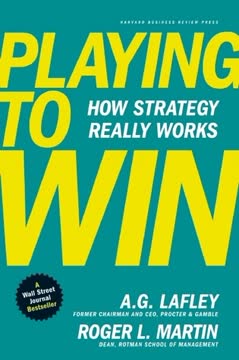
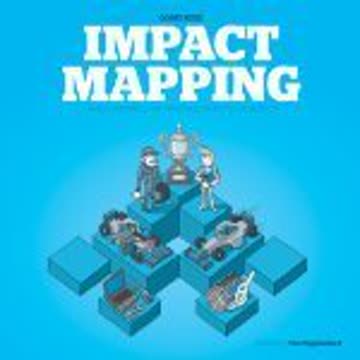
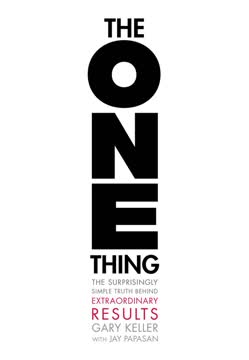
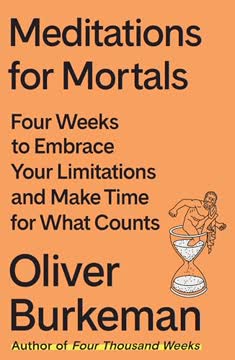
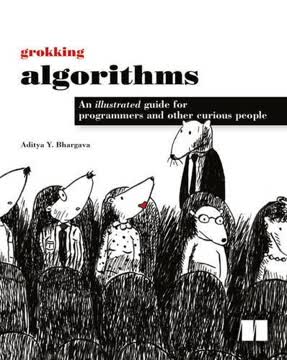
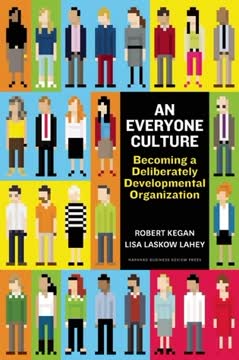
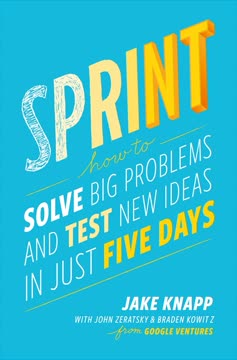
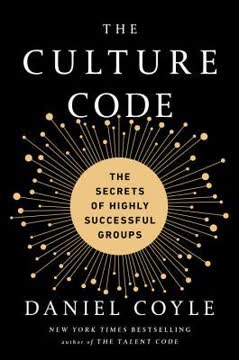
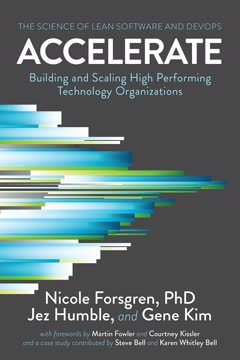
Download PDF
Download EPUB
.epub digital book format is ideal for reading ebooks on phones, tablets, and e-readers.
